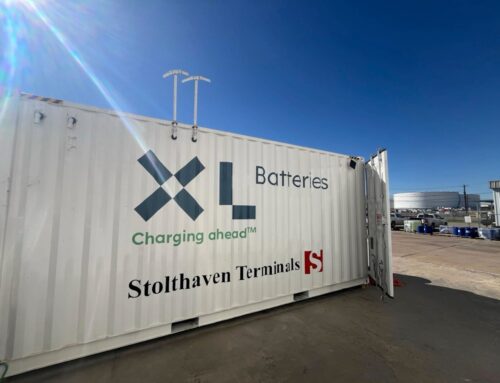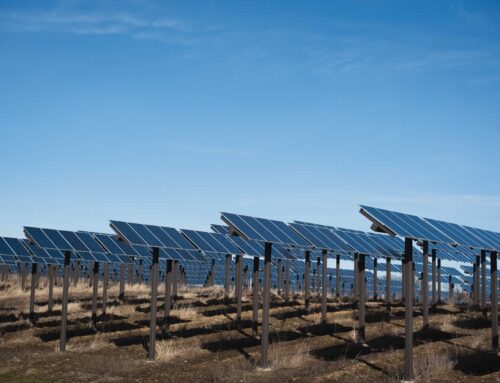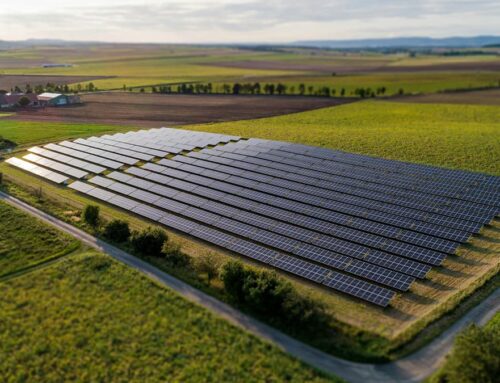Nitrate spiked in C.R. water this year
December 29, 2024
The Gazette offers audio versions of articles using Instaread. Some words may be mispronounced.
Drinking water in Cedar Rapids had one of its worst prolonged spikes of nitrate contamination this year amid a very wet spring and early summer that followed years of drought.
The nitrogen compound is an important crop nutrient, but is a primary pollutant of Iowa’s streams and lakes and it can be harmful to humans.
Nitrate in the water distributed by one of Cedar Rapids’ two treatment plants peaked at nearly 9 parts per million — the highest in at least 15 years, according to city and state data. However, that was still shy of the 10 parts per million federal safety limit, which city officials say the drinking water has not exceeded.
Long-term trends show that the amount of nitrate in the Cedar River — around which the city draws water from shallow wells — continues to rise. Research has indicated links between chronic, elevated nitrate exposure and health ailments such as cancers and birth defects.
The federal limit is based on short-term exposure effects, such as decreased oxygen in people’s blood. That most commonly affects infants who drink formula with tainted water.
The amount of nitrate in the Cedar Rapids’ water largely is dependent on its concentration in the river because the city has no treatment processes to remove it.
Cedar River nitrate concentrations near Cedar Rapids peaked in May at more than 18 parts per million after Eastern Iowa had one of its top 10 wettest starts to the year on record, according to state and city data.
Stormwater absorbs nitrate as it penetrates cropland and carries it to streams via underground drainage tile lines.
Water quality researchers had expected a surge in nitrate pollution when above-normal rainfall this year eliminated drought conditions that had persisted for four years. They postulated that a lack of rain in the dry years had allowed nitrate to accumulate in farm fields.
The city’s Northwest treatment plant — which provides about a third of Cedar Rapids’ drinking water — was outputting water that was more than 8 parts per million nitrate for most of a two-month stretch that started in May, according to city data.
“Extended periods of 8 and 9 (parts per million) would be in that concentration range where mounting scientific evidence suggests you might need to worry about things like different forms of cancer — bladder cancer, thyroid, colorectal — as well as things like birth defects for people that might be pregnant and drinking that water,” said David Cwiertny, director of the Center for Health Effects of Environmental Contamination at the University of Iowa.
More recently, the Cedar Rapids drinking water nitrate concentration has been closer to 1 part per million. The city’s other, larger treatment plant peaked at about 6 parts per million.
Water from both facilities commingle in the city’s distribution system.
Like the vast majority of public water utilities in Iowa, Cedar Rapids doesn’t employ a nitrate-reduction system at its treatment facilities.
Des Moines’ nitrate system was the largest in the world when it was built in 1991 at a cost of about $4 million. A roughly $15 million project in 2017 doubled its capacity.
And it costs up to $10,000 per day when it operates during heavy nitrate concentrations. Central Iowa Water Works draws water from the Des Moines and Raccoon rivers, which also had high nitrate concentrations this year.
Nitrate removal would be a last resort for Cedar Rapids, which has navigated higher nitrate concentrations by idling and activating its dozens of wells depending on their levels of contamination. Water from some of its individual wells had nitrate concentrations that exceeded 10 parts per million in June, city data shows.
River water filters through dozens of feet of soil before the city pumps it from the ground. Microbes in the soil feed on nitrate.
The city can amplify the filtration effect by idling wells to allow more time for the natural nitrate removal, said Roy Hesemann, the city’s utilities director.
“We’re very much different than Des Moines, where they have the direct intakes from the river,” Hesemann said. “We have the buffer between the river and the wells to reduce the nitrate levels.”
Stream monitoring shows that, despite a greater awareness of agricultural pollution and efforts to reduce it in the past decade, nitrate concentrations have increased.
A 2019 evaluation of the Cedar River watershed by the Iowa Department of Natural Resources estimated that about 86 percent of river nitrate came from agriculture — commercial fertilizer, manure and nitrogen produced by soybean plant bacteria.
Swine are the leading producers of manure in Iowa. A recent U.S. Department of Agriculture report said there are about 25 million hogs and pigs in the state. That is a 19 percent increase from December 2014.
The U.S. Environmental Protection Agency recently said segments of the Cedar River and four others in Iowa that are drinking water sources for cities should be classified as “impaired waters” because of elevated nitrate concentrations.
Hesemann said concentrations of nitrate that exceed 10 parts per million in Cedar Rapids drinking water is “certainly a possibility” in future years.
“It’s something we’re monitoring very closely,” he said.
Last year, the EPA resumed its long-running assessment of nitrate’s effects on human health, which had been suspended in 2019 during Donald Trump’s first term as president.
Studies have found potential links between digestive tract cancers and long-term consumption of water with nitrate concentrations lower than the EPA’s 10 parts per million limit. But public health officials have said there is not yet enough research to firmly establish a connection.
It’s unclear when that assessment might conclude or whether it will continue after Trump starts his second presidential term in January.
More than 20 agriculture groups — including the Iowa Farm Bureau Federation — have urged the EPA to keep the drinking water nitrate limit unchanged because of how much it would cost to comply with a stricter maximum contaminant level. They further suggest there might be health benefits to higher nitrate intake, noting that research has shown cardiovascular improvements in people who consume foods that contain nitrate.
“There is substantial uncertainty about whether there are any health benefits to lowering the maximum contaminate level below 10 (parts per million), let alone 5 (parts per million),” the groups wrote to the agency in December 2023. “Hundreds of small communities could face tens of millions or more in annual costs with no benefits, potentially depriving those towns of their ability to support their one remaining local hospital, improve wastewater treatment, or pay for schools.”
Under the current rules, Cedar Rapids would not be required to take action to reduce its nitrate concentrations unless it exceeds the 10 parts per million limit in three quarterly tests in one year, said Corey McCoid, the Iowa DNR’s water supply operations supervisor.
If the EPA lowers the limit to 5 parts per million, it’s possible Cedar Rapids would be affected. Nitrate concentrations exceeded that amount in three quarters in 2016, according to city data.
Hesemann said he doesn’t know what it might cost to comply with a lower limit, but that “any sort of nitrate reduction treatment process is very expensive.”
The northwest Iowa town of Le Mars approved this month a more than $20 million project to add reverse osmosis treatment for its drinking water, which will reduce nitrate and other contaminants. The town’s water department serves about 10,500 people, according to state data, whereas the Cedar Rapids Water Division serves about 141,000.
The amount of nitrate in the Cedar River is closely correlated with rainfall in its watershed. Even though the peak nitrate concentration this summer in the city’s drinking water was much higher than in recent years, its average for the entirety of 2024 wasn’t exceptional because other months of the year were dry.
Most of Northern Iowa has some measure of drought, according to a recent U.S. Drought Monitor report.
The alternating extremes of very dry and very wet periods of time that have become more common in Iowa pose a new challenge to water utilities because of the large influxes of nitrate that accompany them, Cwiertny said.
“It’s a reminder the source water is vulnerable,” he said of Cedar Rapids’ high concentrations this year. “Down the road there might be instances where it’s not 8 or 9 (parts per million), it’s 10 or 11, and that becomes really problematic when you think about having access to safe drinking water.”
Comments: (319) 368-8541; jared.strong@thegazette.com
Search
RECENT PRESS RELEASES
Related Post



